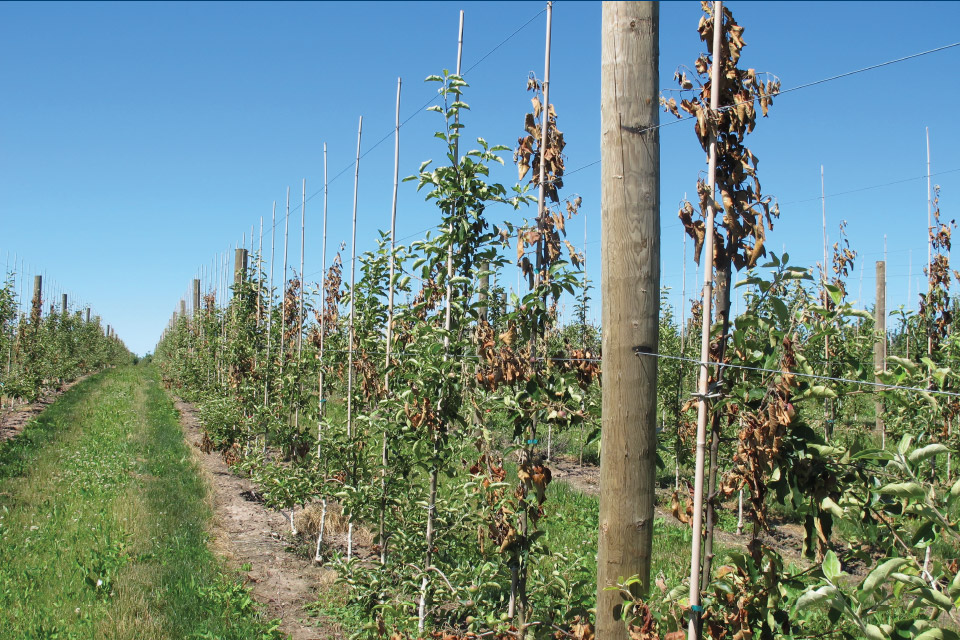
Fire Blight
About
Fire blight, Erwinia amylorva, is a bacterial disease that infects fruit trees, in particular apples and pears. The disease is recognizable by the scorched leaves it inflicts on its host. It is known for its high mortality rate as well.
Biology
Fire blight’s life cycle starts out in spring when temperatures reach about 65ºF, and rain and humidity levels are high.
It overwinters in cankers on branches and mummified fruit. Once proper weather conditions have been met, the bacteria will move up to new blossoms and stems by way of rain, pollinators, or pruning. While only a few cankers will release the bacteria, one canker is enough to infect a whole orchard.
Preferred Host
Fire blight afflicts apple and pear trees. It also affects any plants in the Rosaceae (Rose) family. This includes blackberries, crabapples, Cotoneaster, loquats, mountain ashes, Pyracanthas, quinces, raspberries, and Spiraeas.
What to Watch For
Look for leaves that appear scorched or burned. Blight will start to form on spurs in the spring as the disease enters through new plant shoots and blossoms. Fruit may have a blighted or rotten appearance. The trees and fruit may also ooze tan bacterial liquid. Branches and twigs on fruit trees will begin to develop a shepherd’s crook shape. As the disease moves through to the branches and trunk, cankers that are brown or purple in color will begin to form.
Economic Impacts
Fire blight has a high mortality rate and can be found throughout the U.S. Fire blight costs the U.S. on average $100 million every year.

| Domain: | Bacteria |
| Phylum: | Proteobacteria |
| Class: | Gammaproteobacteria |
| Order: | Enterobacterales |
| Family: | Erwiniaceae |
| Genus: | Erwinia |
| Species: | E. amylovora |
| Binomial name | |
|---|---|



